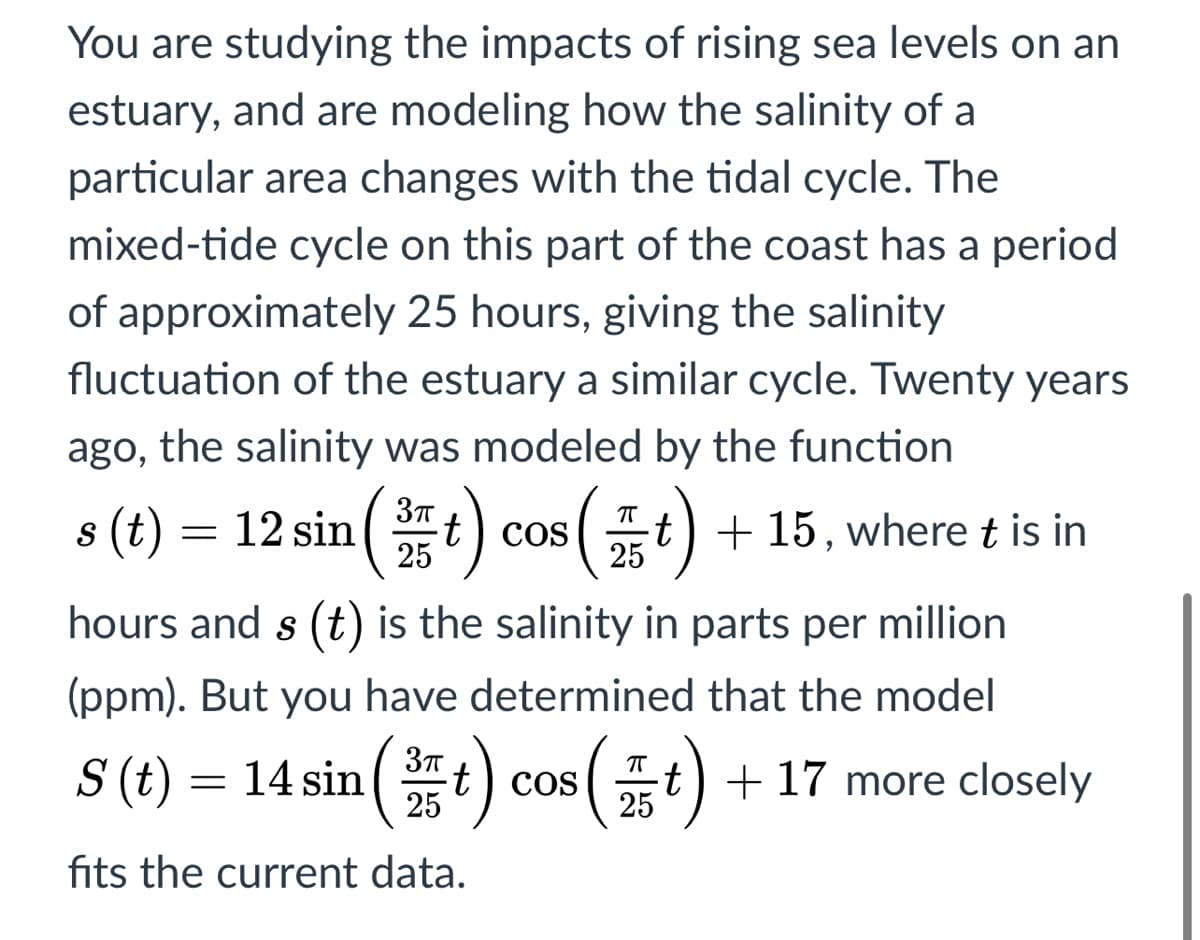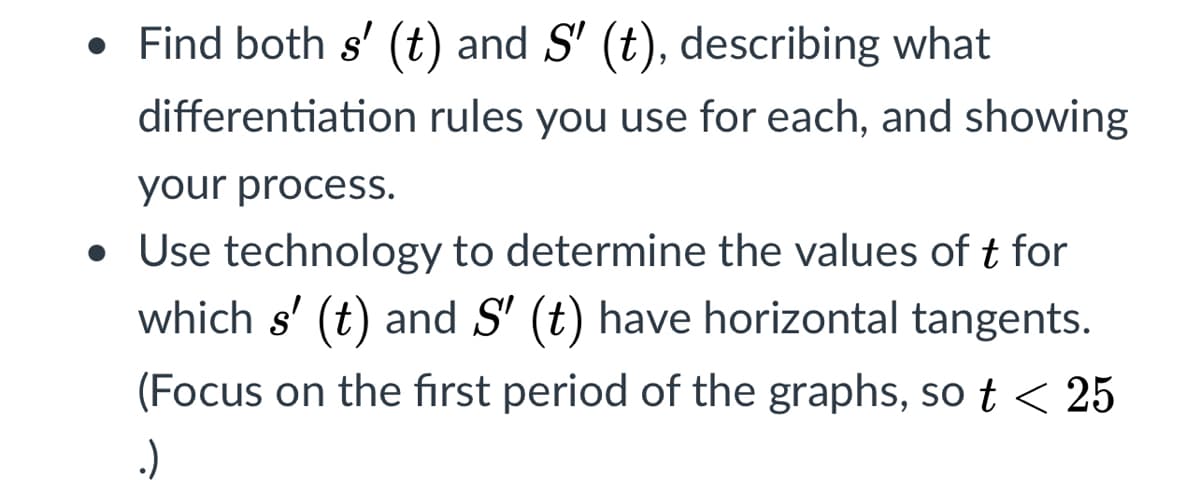You are studying the impacts of rising sea levels on an estuary, and are modeling how the salinity of a particular area changes with the tidal cycle. The mixed-tide cycle on this part of the coast has a period of approximately 25 hours, giving the salinity fluctuation of the estuary a similar cycle. Twenty years ago, the salinity was modeled by the function 8 (t) = 12 sin(t) t) + 15, where t is in 25 hours and s (t) is the salinity in parts per million (ppm). But you have determined that the model S (t) = 14 sin(t) cos (t) +17 more closely cos ( 25 25 fits the current data.
You are studying the impacts of rising sea levels on an estuary, and are modeling how the salinity of a particular area changes with the tidal cycle. The mixed-tide cycle on this part of the coast has a period of approximately 25 hours, giving the salinity fluctuation of the estuary a similar cycle. Twenty years ago, the salinity was modeled by the function 8 (t) = 12 sin(t) t) + 15, where t is in 25 hours and s (t) is the salinity in parts per million (ppm). But you have determined that the model S (t) = 14 sin(t) cos (t) +17 more closely cos ( 25 25 fits the current data.
Functions and Change: A Modeling Approach to College Algebra (MindTap Course List)
6th Edition
ISBN:9781337111348
Author:Bruce Crauder, Benny Evans, Alan Noell
Publisher:Bruce Crauder, Benny Evans, Alan Noell
Chapter2: Graphical And Tabular Analysis
Section2.1: Tables And Trends
Problem 1TU: If a coffee filter is dropped, its velocity after t seconds is given by v(t)=4(10.0003t) feet per...
Related questions
Question

Transcribed Image Text:You are studying the impacts of rising sea levels on an
estuary, and are modeling how the salinity of a
particular area changes with the tidal cycle. The
mixed-tide cycle on this part of the coast has a period
of approximately 25 hours, giving the salinity
fluctuation of the estuary a similar cycle. Twenty years
ago, the salinity was modeled by the function
s (t) = 12 sin ( t) cos
t) + 15, where t is in
25
25
hours and s (t) is the salinity in parts per million
(ppm). But you have determined that the model
S (t) = 14 sin(t) cos (t) + 17 more closely
25
25
fits the current data.

Transcribed Image Text:• Find both s' (t) and S' (t), describing what
differentiation rules you use for each, and showing
your process.
• Use technology to determine the values of t for
which s' (t) and S' (t) have horizontal tangents.
(Focus on the first period of the graphs, so t < 25
.)
Expert Solution
Step 1
Given that
Here S(t), s(t) gives the salinity level in ppm and t is the time in hours.
Trending now
This is a popular solution!
Step by step
Solved in 6 steps with 1 images

Recommended textbooks for you

Functions and Change: A Modeling Approach to Coll…
Algebra
ISBN:
9781337111348
Author:
Bruce Crauder, Benny Evans, Alan Noell
Publisher:
Cengage Learning

Trigonometry (MindTap Course List)
Trigonometry
ISBN:
9781337278461
Author:
Ron Larson
Publisher:
Cengage Learning


Functions and Change: A Modeling Approach to Coll…
Algebra
ISBN:
9781337111348
Author:
Bruce Crauder, Benny Evans, Alan Noell
Publisher:
Cengage Learning

Trigonometry (MindTap Course List)
Trigonometry
ISBN:
9781337278461
Author:
Ron Larson
Publisher:
Cengage Learning
